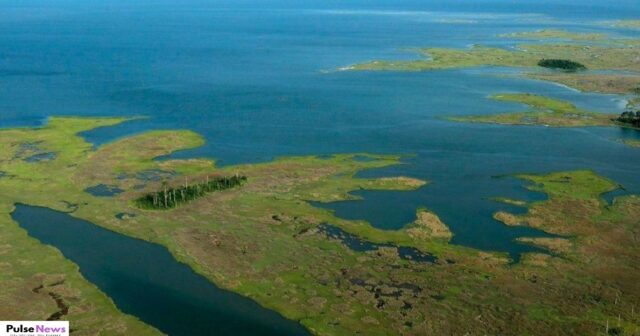In recent years, the Chesapeake Bay has been heavily impacted by hypoxic, or low-oxygen, conditions, commonly referred to as “dead zones.” These regions develop when excess nutrients from agricultural and urban runoff fuel algae blooms. As the algae decompose, oxygen levels drop, creating an environment that is uninhabitable for marine life. New research, however, suggests that existing models may be overestimating the extent of future dead zones in the Chesapeake Bay by failing to account fully for the complex interactions of climate change on environmental variability.
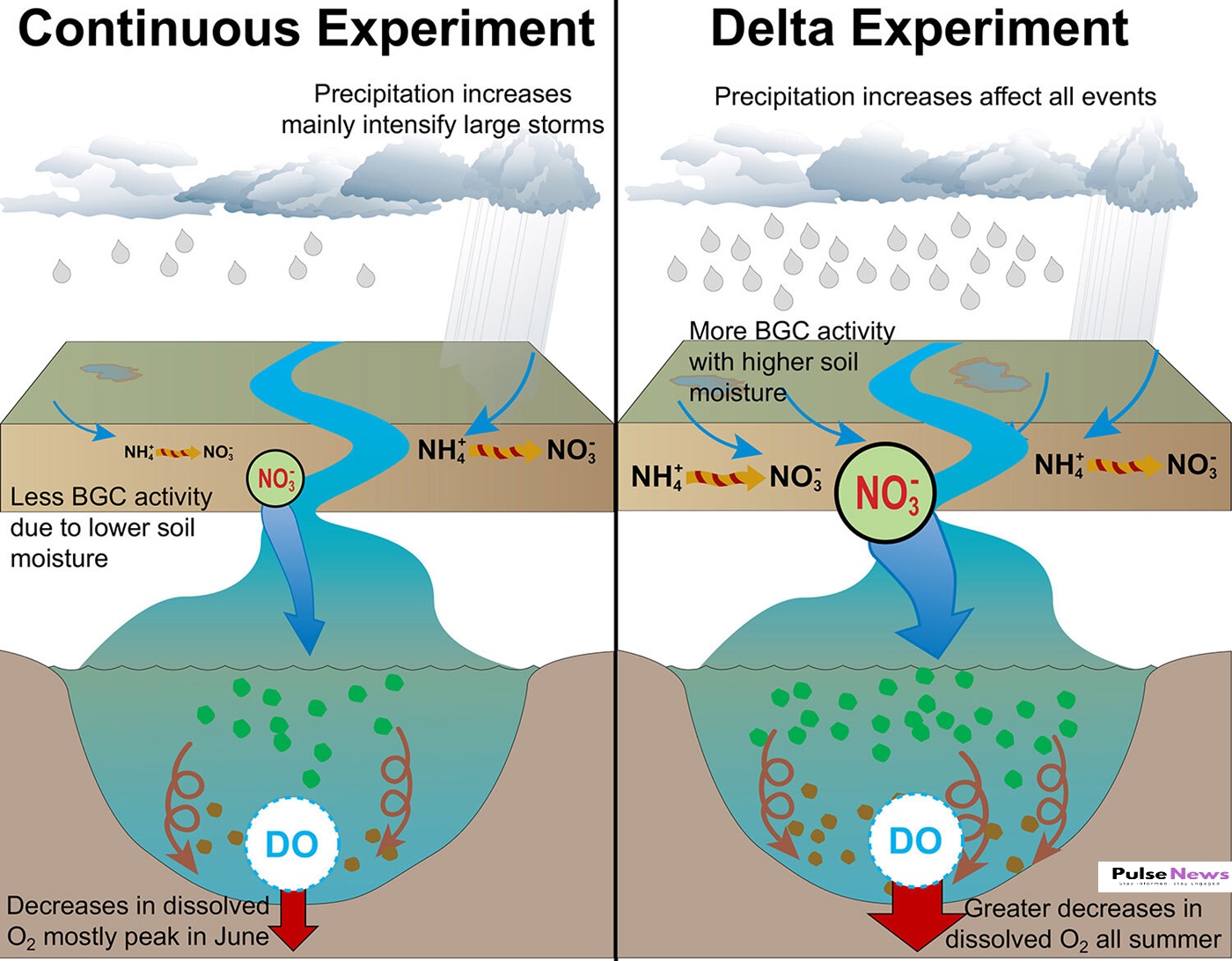
A team of scientists from William & Mary’s Batten School and Virginia Institute of Marine Science (VIMS) recently published a study in Scientific Reports, highlighting the discrepancies among different modeling methodologies used to forecast future hypoxia in the Bay. Their findings underscore the importance of accurately predicting the impact of climate variability on hypoxia to inform effective management and conservation strategies.
Understanding Dead Zones and Hypoxia in the Chesapeake Bay
Hypoxic conditions develop in coastal waters like the Chesapeake Bay due to nutrient pollution. Nitrogen and phosphorus from fertilizers, septic systems, and urban runoff stimulate algae growth. When these algae die, their decomposition depletes oxygen, leading to dead zones that suffocate fish, shellfish, and other aquatic life. These dead zones are an essential indicator of water quality, impacting the health of the Bay’s ecosystems and economy, which relies on fishing and tourism.
The Chesapeake Bay Program (CBP), a regional partnership focused on Bay restoration, tracks the annual extent of these dead zones to gauge progress toward improving water quality. Computer models, which incorporate climate projections, are crucial for setting nutrient management goals and informing long-term strategies to mitigate hypoxia.
New Insights from Continuous Simulation Modeling
The study led by Kyle Hinson, a former Ph.D. candidate at William & Mary’s Batten School and now a postdoctoral researcher at Pacific Northwest Laboratory, leveraged a more advanced approach called the “continuous simulation” model to study hypoxia in the Bay. This method simulates environmental conditions within the Chesapeake Bay and its watershed from 1980 through 2065, allowing researchers to consider the full spectrum of climate variability. This level of simulation required extensive computational resources, running on supercomputers for over 40 days.
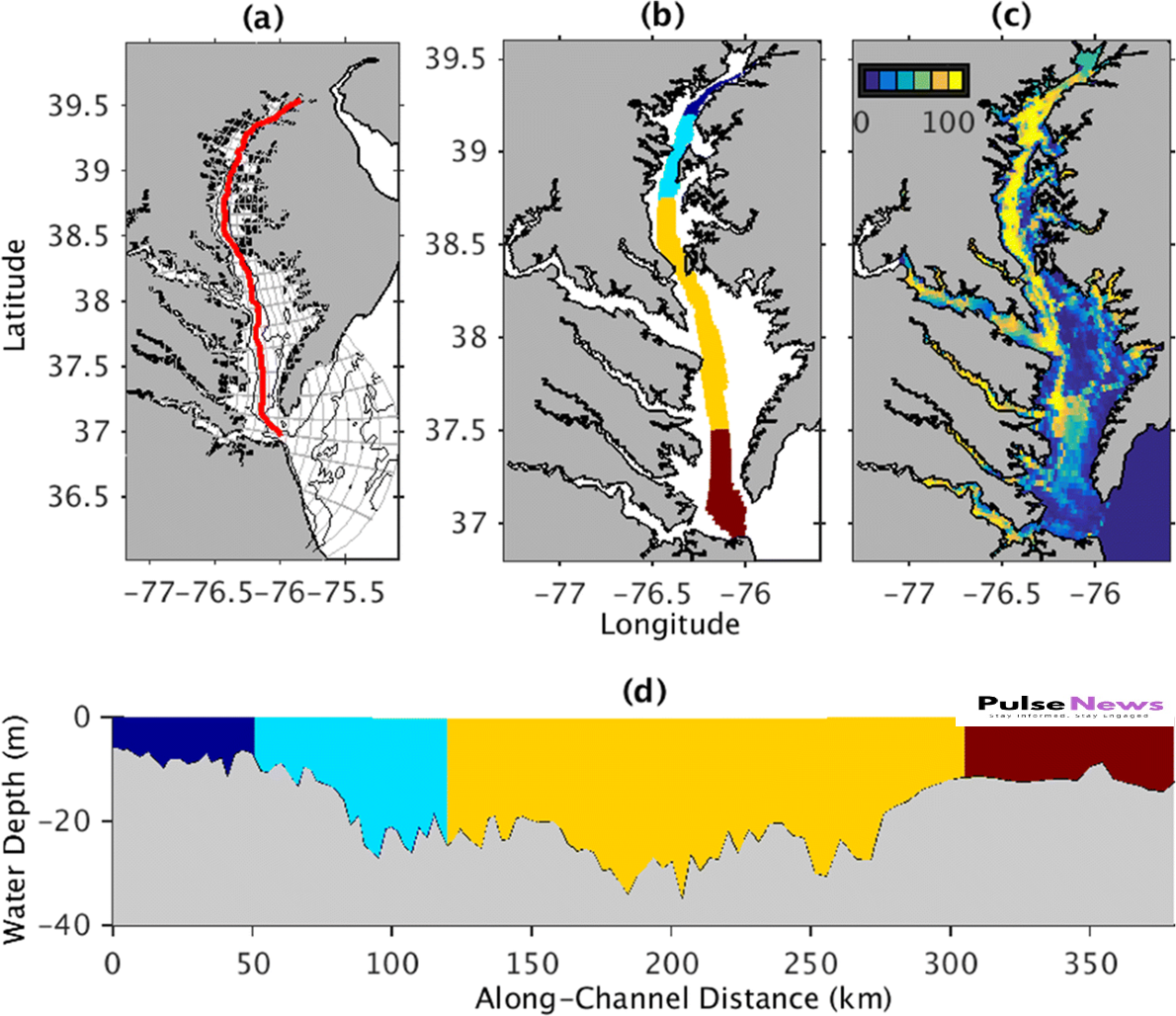
Historically, two simpler modeling methods—delta and time-slice—have been used to predict future hypoxia levels in the Bay. While computationally efficient, these methods may oversimplify environmental dynamics and provide an incomplete picture. Hinson’s team compared the results of the continuous method with the delta and time-slice approaches to determine how accurately they project the impacts of climate change on the Bay.
Limitations of the Delta and Time-Slice Models
The delta method, widely used by regulatory agencies and the CBP, combines historical climate data with projections to estimate future environmental changes in the Bay. It calculates the average difference between historical and predicted weather patterns but doesn’t simulate the years between these two points. While effective in its simplicity, this method may miss critical details about the timing and intensity of future precipitation and temperature shifts. The time-slice method, on the other hand, uses future climate projections from the continuous model while avoiding simulating the years between past and future data. Although more precise than the delta method, it still doesn’t capture the full range of year-to-year variability.
Hinson and his team’s analysis revealed that the delta method’s results differed significantly from those of the continuous simulation. Whereas both the time-slice and continuous methods projected an increase of 9% to 11% in annual hypoxic volume, the delta method nearly doubled this prediction, estimating a 19% increase. The delta method’s reliance on historical rainfall patterns led it to distribute precipitation more evenly over time, missing the effects of projected changes in precipitation patterns due to climate change.
“Future rainfall patterns of earth are likely to include more intense about it individual rain events separated by prolonged dry periods, rather than the steady precipitation that models of it like the delta approach assume,” said Hinson. This shift is a critical factor, as heavier rain events can lead to greater nutrient runoff, fueling algae growth and subsequent hypoxia.
Climate Change Precipitation, and Nutrient Runoff Dynamics
The study found that the timing and distribution of precipitation, rather than its total amount, have a significant impact on nutrient runoff in the Bay. The continuous model revealed a likely increase in heavy rainfall events interspersed with longer dry spells, a pattern often seen in climate change projections for the region. In contrast, the delta method’s use of historical patterns resulted in a more even distribution of rainfall, leading to an overestimation of nutrient influx into the Bay.
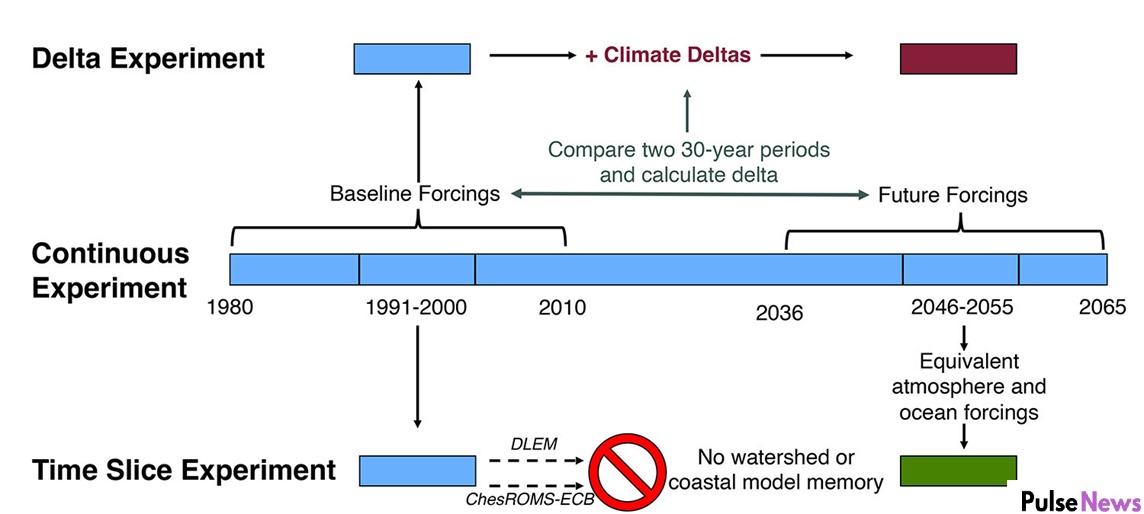
With more intense rain events, runoff tends to carry larger quantities of nitrogen and phosphorus into waterways. The continuous model better represented this “pulsed” nutrient delivery, which is more realistic under climate change scenarios, while the delta model’s even rainfall assumption misrepresented this critical dynamic. As Hinson explained, “The delta method’s results expect soils to remain a bit wetter, which affects how nutrients cycle within the soil. Under these assumptions, more nitrate would enter the Bay, leading to exaggerated predictions of hypoxia.”
Evapotranspiration and Freshwater Discharge Patterns
Another finding that challenged conventional expectations was a projected decrease in freshwater discharge into the Bay, despite increased overall precipitation. The continuous model suggested that higher temperatures due to climate change would result in more evapotranspiration—moisture from soil and plants evaporating into the atmosphere. This process would offset some of the additional rainfall, meaning that less freshwater would reach the Bay, reducing nutrient dilution and contributing to hypoxia in a different way.
Marjorie Friedrichs, Hinson’s co-author and Ph.D. advisor, pointed out that these counterintuitive findings emphasize the importance of accounting for temperature-driven changes in water cycles. “With increased temperatures, evapotranspiration outweighs the increase in precipitation, which ultimately impacts nutrient concentrations and hypoxia in the Bay,” Friedrichs explained. This highlights the need for models that reflect the full complexity of climate impacts to set realistic environmental goals.
Implications for Chesapeake Bay Restoration Efforts
While all models agree that hypoxia in the Chesapeake Bay will increase with climate change, the study reveals that continuous simulations offer a more accurate assessment, which is essential for setting achievable restoration goals. Policymakers rely on models to determine the Bay’s Total Maximum Daily Load (TMDL), which is the EPA-regulated limit for various pollutants, including nutrients responsible for dead zones. Accurate predictions are crucial for effective nutrient management strategies, ensuring that TMDL targets reflect the Bay’s real-world conditions under future climate scenarios.
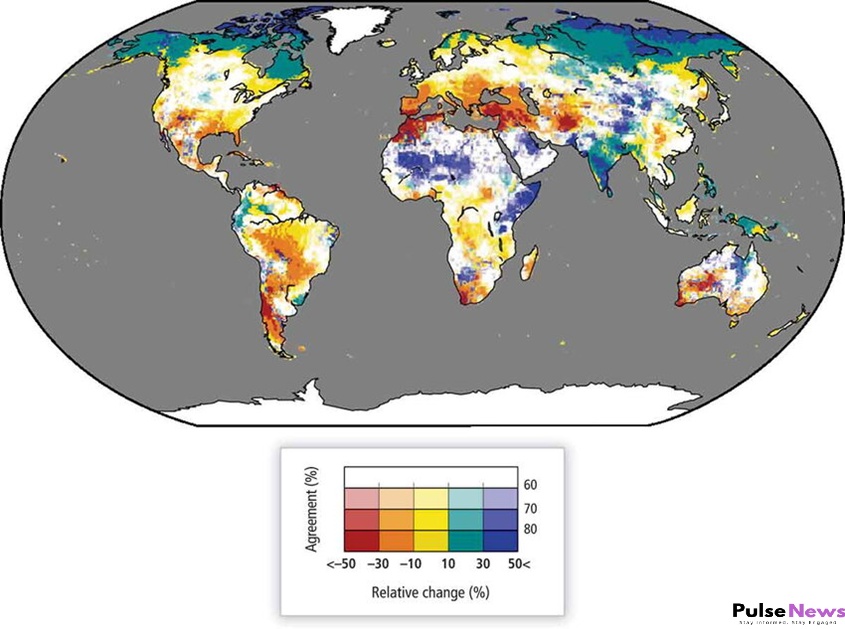
The findings also highlight that nutrient management alone may not fully address future hypoxia increases. Without accurate models, there is a risk that efforts to combat dead zones could be misdirected or insufficiently ambitious. Friedrichs noted, “Even with effective nutrient reduction strategies, if we do not account for climate-driven changes, we could fall short of restoring the Bay to desired oxygen levels.”
The Chesapeake Clean Water Blueprint Progress and Challenges
In 2010, the EPA established the Chesapeake Clean Water Blueprint with a goal to reduce nitrogen, phosphorus, and sediment entering the Bay. This plan aimed to achieve pollution-reduction targets by 2025, but meeting these goals has proven challenging. While significant progress has been made, many jurisdictions in the Bay watershed—spanning six states and Washington, D.C.—face obstacles to fully meeting their pollution-reduction milestones. Hinson’s earlier research, published in Biogeosciences, demonstrated that achieving these nutrient reduction goals could lower hypoxia by about 50% from 2010 levels, providing a significant improvement for Bay health. However, these projections did not incorporate climate change impacts. As Friedrichs noted, “The nutrient reduction targets were set without factoring in climate change, and yet they’re essential for Bay health. If we didn’t have these targets, we’d be in a much worse position.”
The findings suggest that revisiting TMDL goals with climate-adjusted models may be necessary for setting realistic future objectives, giving policymakers and conservationists the tools they need to respond to changing environmental conditions.
Broader Impacts of Hypoxia on Carbon Cycling and Global Climate Models
The processes that drive hypoxia are also tied to carbon cycling, with significant implications for global climate models. As algae proliferate in nutrient-rich waters, they absorb carbon dioxide. When they die and decompose, some of this carbon is sequestered in the Bay’s sediment, while some is released back into the atmosphere or the open ocean. This study highlights the importance of refining estuarine models to understand not only local environmental changes but also the global carbon cycle. Coastal estuaries like the Chesapeake Bay play a role in the Earth’s carbon budget, and more accurate models can inform broader climate assessments.
“Understanding hypoxia is not just about protecting fish or crabs; it’s part of the bigger picture of carbon cycling and global climate models,” said Hinson. Improving the accuracy of estuarine models can refine predictions of global carbon budgets, giving scientists a clearer understanding of carbon storage in coastal ecosystems.
Future Directions and Policy Recommendations
The study’s results underscore the importance of adapting management strategies in the Chesapeake Bay to account for climate variability. To effectively mitigate future hypoxia, policymakers and regulatory agencies must use models that accurately reflect climate-induced changes in precipitation, evapotranspiration, and nutrient dynamics. Given the limitations of the delta method, Hinson and Friedrichs advocate for the adoption of continuous simulation models where feasible, especially for establishing long-term nutrient management goals. While continuous models are more computationally demanding, they offer a higher degree of accuracy and flexibility in predicting complex environmental changes.
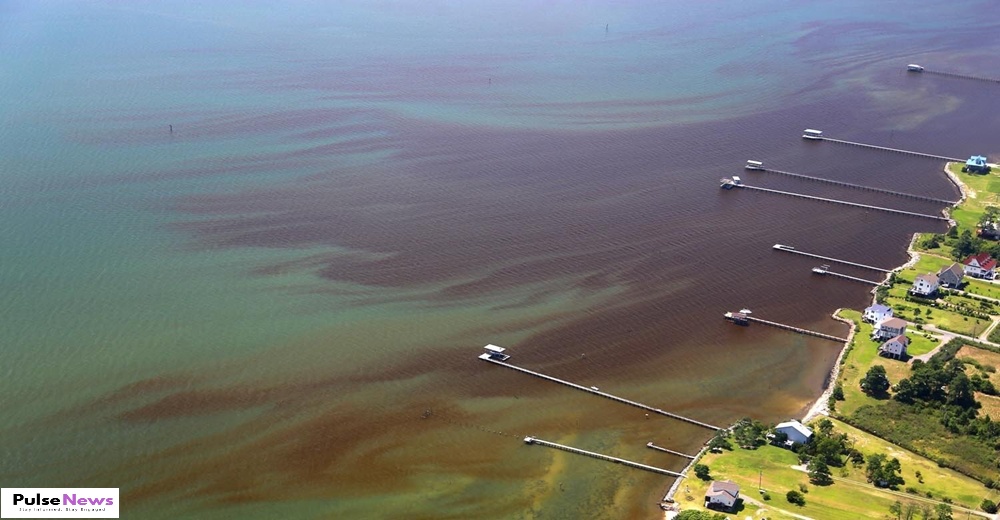
Furthermore, Hinson suggests that policymakers consider updating TMDL standards to incorporate climate-adjusted targets, particularly as the effects of climate change become more pronounced. “Climate change is already impacting the Chesapeake Bay, and our models need to account for these changes


